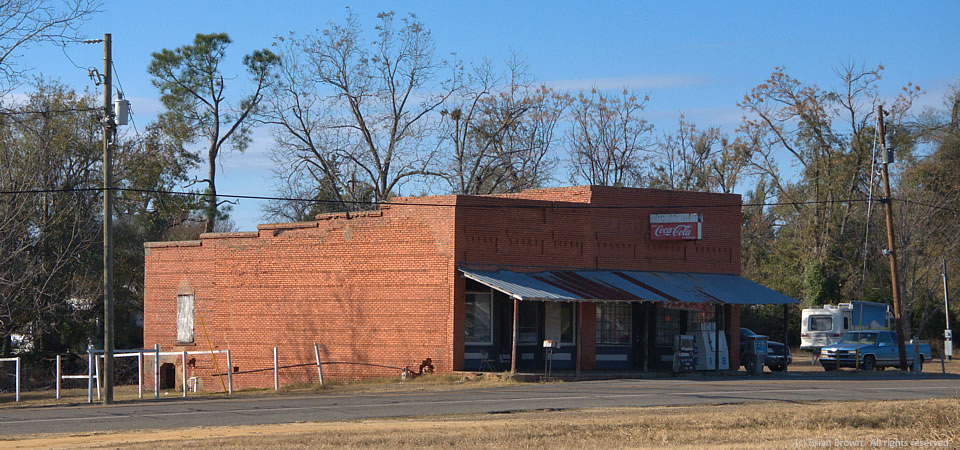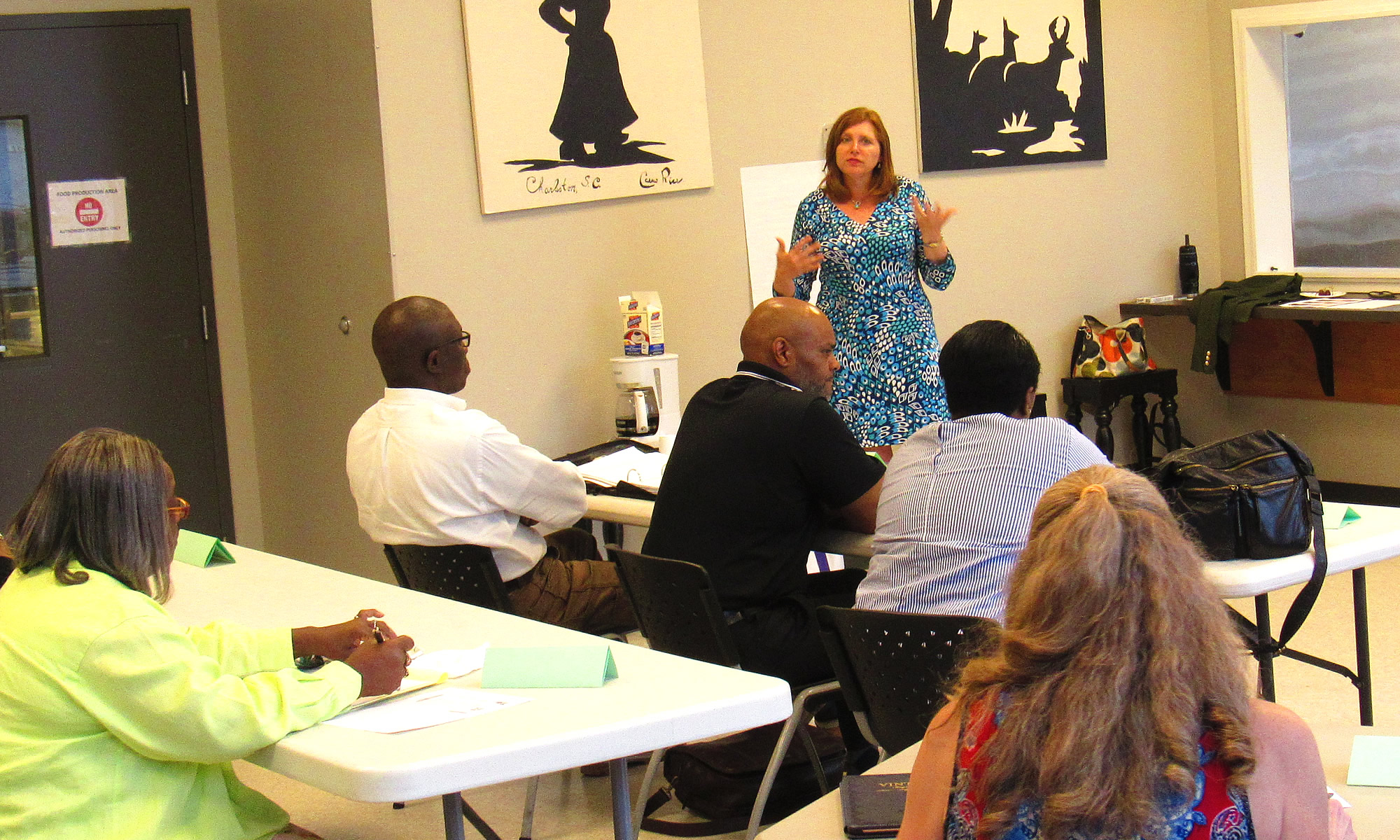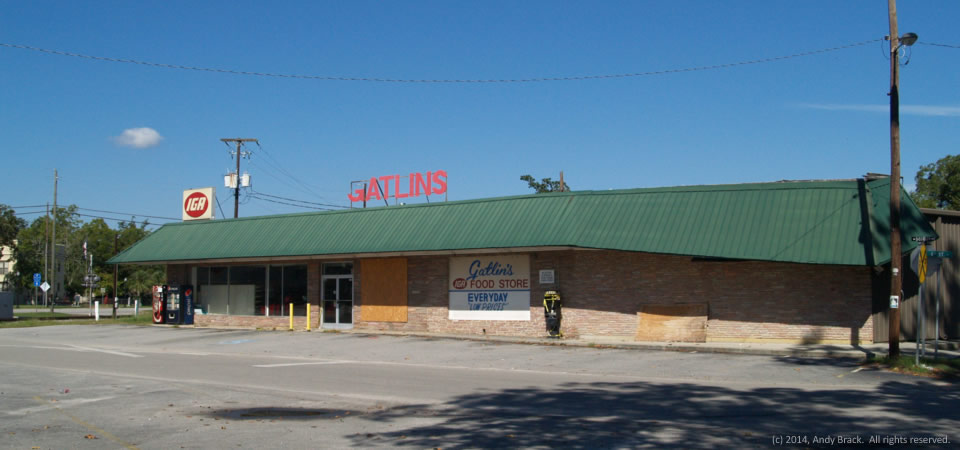
VanishingSouthGeorgia.com photographer Brian Brown says this store is a step back in time, with its old Coca-Cola sign and gas pumps right at the front door. “There’s also a restaurant next door, though I’m not sure if it’s open. The store was quite busy, though. It was late in the afternoon so the light was a bit harsh.”
Gough (pronounced “GOFF”), located about 10 miles west of Waynesboro in eastern central Georgia, is in Burke County, which had about 23,125 people in 2012. The population is evenly split in the numbers of white and black residents (49 percent each). Its population peak was in 1920 when it had almost 31,000 people; its low point was in 1970 when it had 18,255 people.
The county, located between Augusta and Statesboro, has a median household income of $32,188. Some 28.6 percent of people live in poverty, according to a five-year Census estimate.
Photo taken in by Brian Brown. Copyrighted; all rights reserved.


